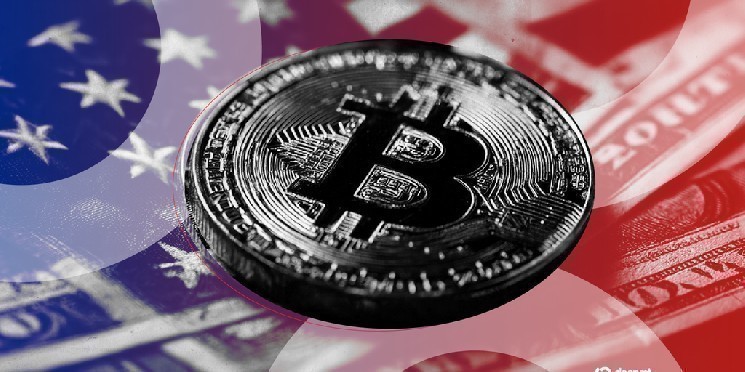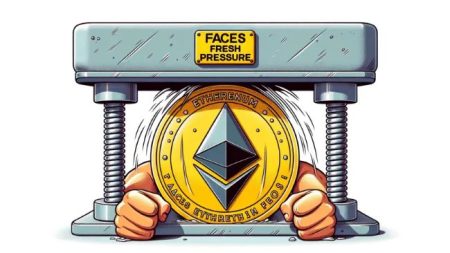Bitcoin Market Holds Its Breath as Crucial Inflation Data Approaches
Investors Pivot Between Optimism and Caution While Awaiting Key Economic Signals
In the volatile world of cryptocurrency trading, all eyes are now fixed on Thursday’s U.S. inflation report, a critical data point that could significantly influence Federal Reserve policy decisions and, consequently, Bitcoin’s price trajectory. This heightened attention comes as the leading cryptocurrency retreated 2.7% to $103,600 in the past 24 hours, according to CoinGecko data, erasing Sunday’s gains and reflecting broader market uncertainty.
The cryptocurrency market, which experienced a devastating $19 billion liquidation wipeout during the October 10 crash, had begun showing signs of recovery last week as geopolitical tensions eased and technical indicators strengthened. However, this nascent optimism has quickly been overshadowed by the looming release of the U.S. October Consumer Price Index (CPI) report – only the second inflation measurement since the federal government shutdown began 43 days ago. The timing of this economic indicator couldn’t be more crucial, as it arrives during a period when traders are simultaneously processing the bullish resolution to the U.S. government shutdown and a concerning pullback in overall risk appetite across financial markets.
“There is still some uncertainty about whether the CPI data will be released on schedule tomorrow,” Tim Sun, Senior Researcher at HashKey Group, told Decrypt. He emphasized that the October figure, alongside any belated September data, “will directly determine how traders price in a potential rate cut in December, and will serve as the benchmark for short-term market positioning.” Market consensus estimates compiled by FXStreet suggest October’s year-over-year inflation will hold steady at 3%, but any deviation from this projection could trigger significant market movements. The stakes are particularly high as odds of a December rate cut have already dropped to 67.9%, down substantially from 85% just last week, according to the CME FedWatch Tool – a shift that reflects Federal Reserve Chairman Jerome Powell’s increasingly hawkish rhetoric in recent communications.
The Inflation Report’s Potential Impact on Bitcoin and the Broader Financial Ecosystem
The upcoming inflation data represents a pivotal moment for Bitcoin and the broader cryptocurrency market, with potential outcomes that could push the digital asset in dramatically different directions. A lower-than-expected inflation reading could reinvigorate bets on a more dovish Federal Reserve approach, potentially weakening U.S. dollar strength and creating favorable conditions for risk assets like Bitcoin to rally. Conversely, should the CPI report indicate hotter-than-anticipated inflation, it could further strengthen the dollar and accelerate Bitcoin’s recent price decline, potentially testing critical support levels that technical analysts have identified.
“Yesterday’s decline can be directly attributed to a broad-based reduction in overall risk appetite,” Sun observed, pointing to a notable capital rotation out of technology stocks and into stable blue-chip investments – a clear signal of growing investor caution amid macroeconomic and geopolitical uncertainties. This shift in investor behavior demonstrates how cryptocurrency markets have become increasingly correlated with traditional financial markets, particularly with growth-oriented technology stocks that similarly respond to changes in monetary policy expectations. The relationship between inflation expectations, Federal Reserve policy decisions, and cryptocurrency prices has become more pronounced in recent years, making economic indicators like the CPI report essential monitoring points for Bitcoin traders and investors.
Market Dynamics: Risk Appetite, Dollar Strength, and Cryptocurrency Movement
The current market environment represents a complex interplay between risk sentiment, dollar strength, and cryptocurrency valuations. Bitcoin’s recent price action illustrates the delicate balance of forces currently at work, with the asset having surged above $100,000 for the first time in its history before encountering resistance and retreating slightly. This movement occurs against a backdrop of shifting institutional interest, with some large investors taking profits while others continue to accumulate in anticipation of further upside potential. The increasing institutionalization of the Bitcoin market has brought more sophisticated trading behaviors but has also introduced greater sensitivity to macroeconomic factors that previously had less influence on cryptocurrency valuations.
“The market is still constrained by weak sentiment. Any clear indication of a rate-cut trajectory or expectations of liquidity easing could restore some level of risk appetite,” the HashKey analyst explained, noting this would provide “direct support for a price rebound across risk assets.” This assessment underscores how Bitcoin has evolved from its early positioning as a hedge against inflation to become an asset class that frequently responds to liquidity conditions and risk sentiment in global markets. The dollar’s strength has proven particularly influential, as a stronger greenback typically coincides with periods of risk aversion and creates headwinds for dollar-denominated assets like Bitcoin. The currency markets will therefore be watching the inflation report just as intently as cryptocurrency traders, with potential ripple effects across multiple asset classes depending on the data’s implications for future Federal Reserve policy decisions.
Beyond Inflation: Additional Factors Shaping Bitcoin’s Market Outlook
While the inflation report commands center stage, several other factors continue to influence Bitcoin’s price dynamics. The cryptocurrency market has been digesting the implications of recent election results, ongoing regulatory developments, and evolving institutional adoption patterns. These elements create a multifaceted backdrop against which the inflation data will be interpreted. Institutional flows into Bitcoin products, particularly exchange-traded funds (ETFs), have remained robust even during periods of price volatility, suggesting a level of long-term conviction among certain investor segments that could help stabilize prices during periods of uncertainty.
Technical analysis patterns also suggest Bitcoin stands at a critical juncture, with key support and resistance levels established following its recent all-time highs. Market structure indicates the potential for increased volatility following the inflation report, as traders position themselves based on the new information and its implications for monetary policy. Trading volumes have increased in options markets, particularly around strike prices that correspond to significant psychological levels, indicating heightened interest in protecting against or capitalizing on large price movements. As the market awaits the inflation data, this technical setup creates conditions for an acceleration of price movement once the direction becomes clearer – potentially reinforcing either a bullish continuation or a deeper corrective phase depending on how the economic data is received and interpreted by market participants.
What’s Next: Navigating the Path Forward in an Uncertain Environment
As Bitcoin traders navigate this pivotal moment, the broader market context suggests continued volatility regardless of the inflation report’s specific outcome. The cryptocurrency ecosystem has matured significantly since previous market cycles, with more sophisticated market participants, enhanced derivatives infrastructure, and greater integration with traditional finance – all factors that influence how economic data impacts prices. These structural changes mean that while Bitcoin remains highly sensitive to macroeconomic developments like inflation reports, the market’s response mechanisms have evolved to incorporate more complex trading strategies and institutional positioning.
Looking beyond the immediate inflation report, market observers are also considering how seasonal patterns might influence cryptocurrency prices heading into year-end, particularly as traditional financial markets enter their typically lower-volatility holiday periods. Historical data suggests Bitcoin often experiences significant price movements during November and December, adding another layer of consideration for traders attempting to position themselves optimally. As the market processes the upcoming inflation data and subsequent Federal Reserve communications, Bitcoin’s price action will likely provide valuable insights into the prevailing market psychology and potentially set the tone for the remainder of 2024’s final quarter. Whether the leading cryptocurrency pushes toward new all-time highs or enters a period of consolidation, the inflation report represents a critical catalyst in determining which narrative gains dominance in the weeks ahead.















